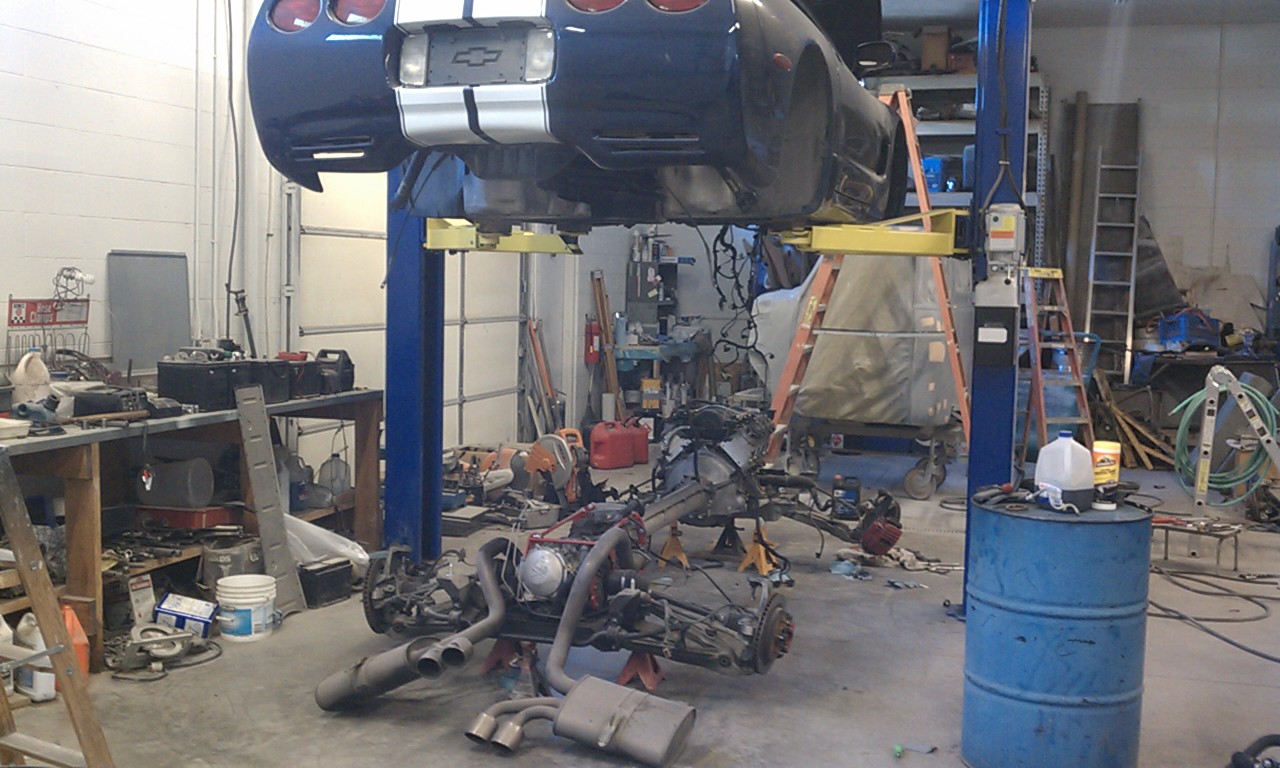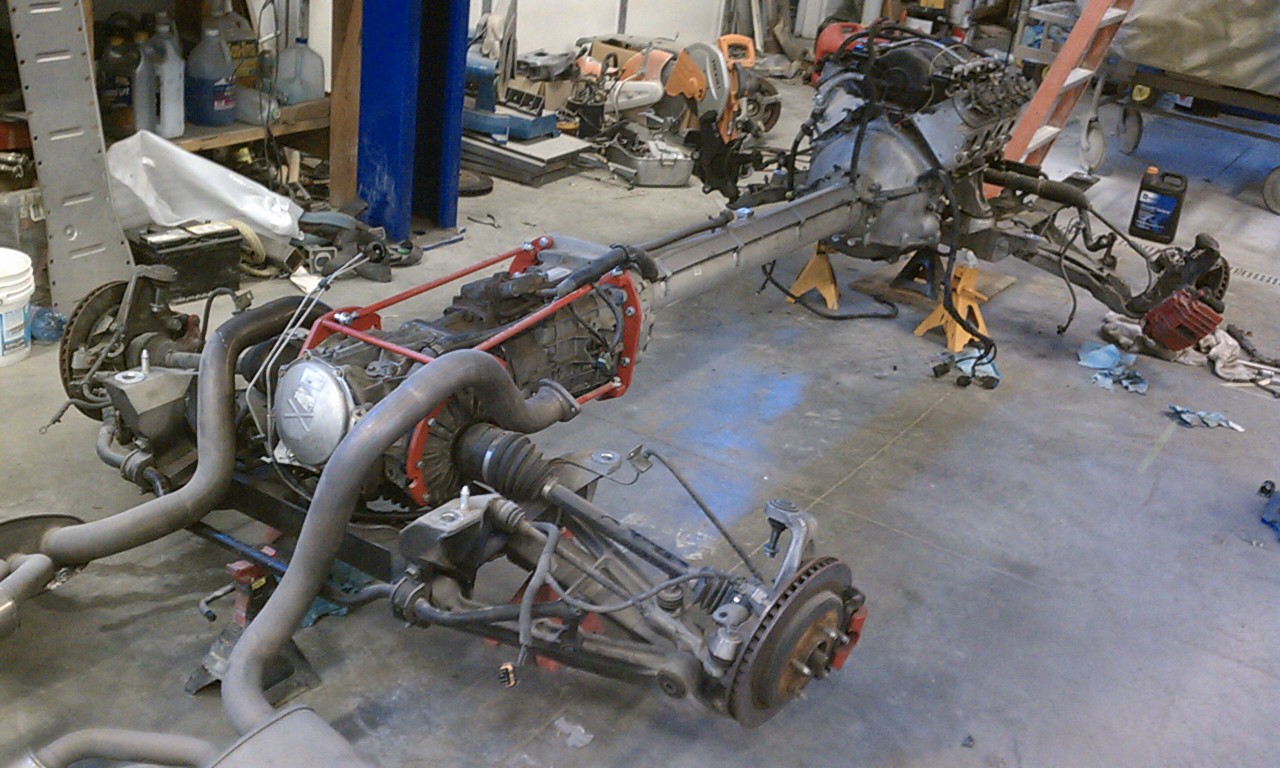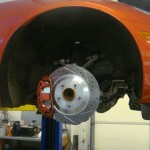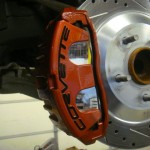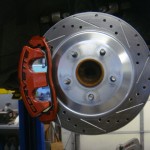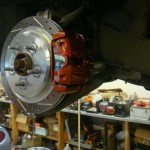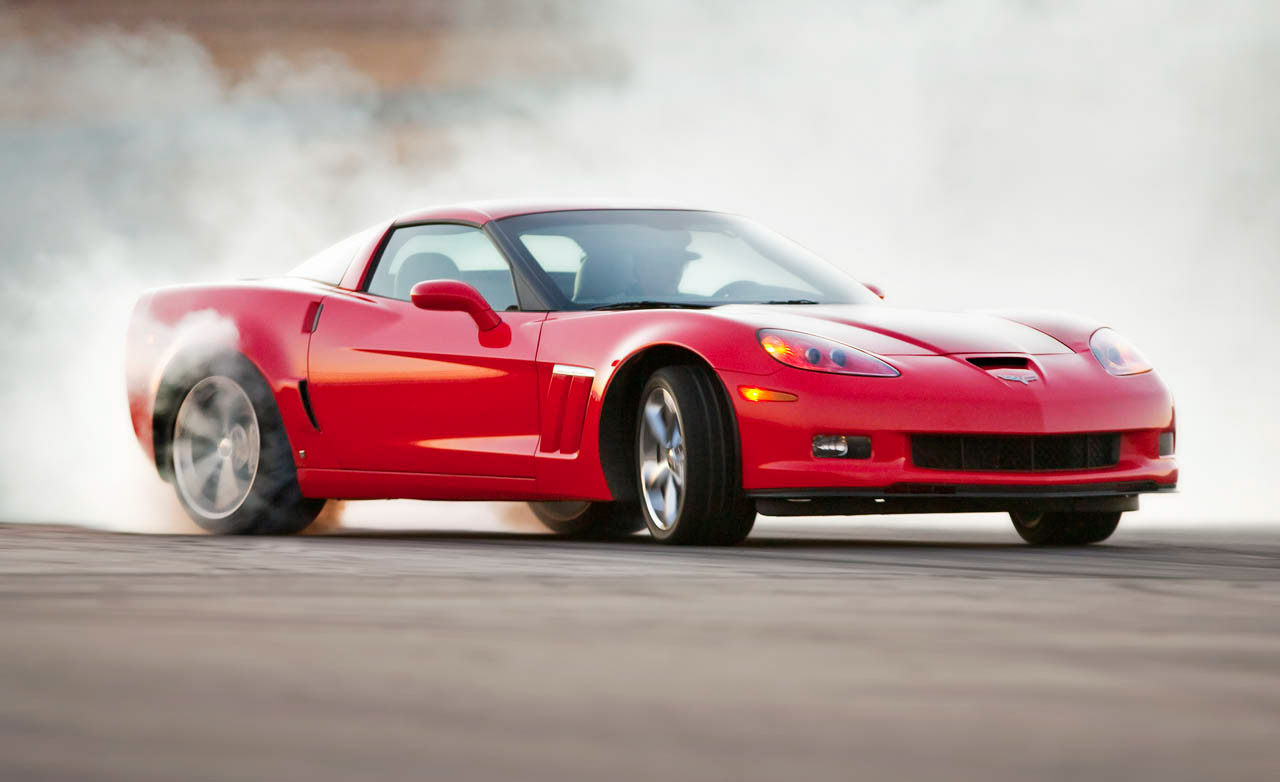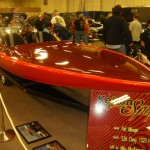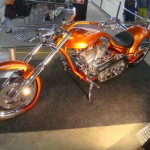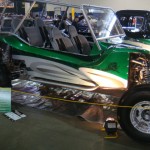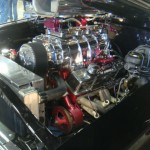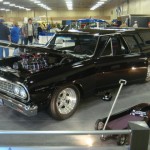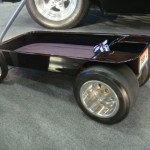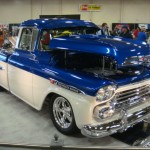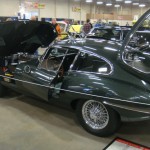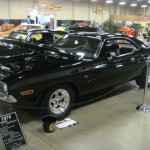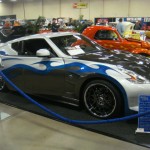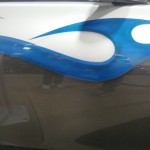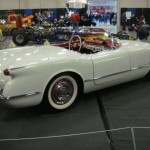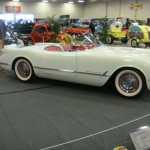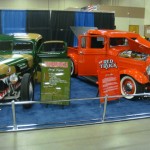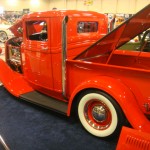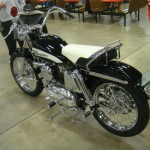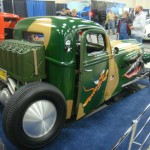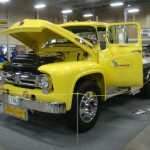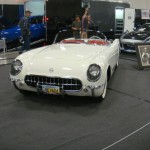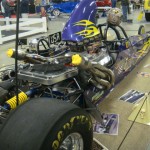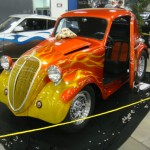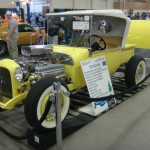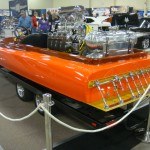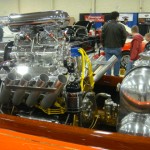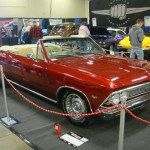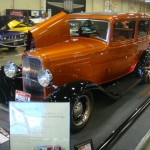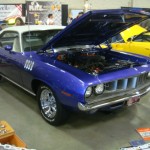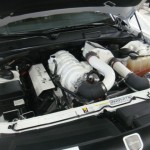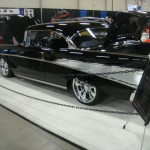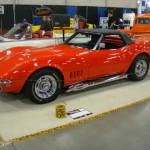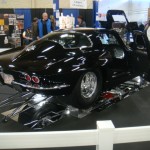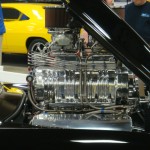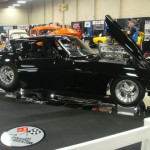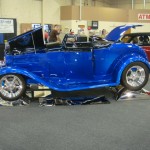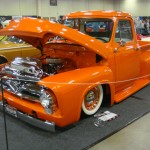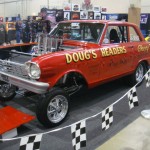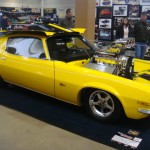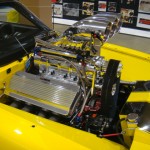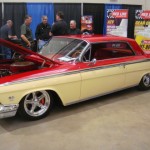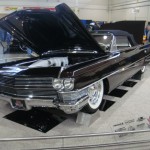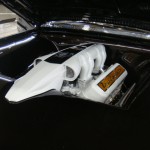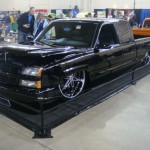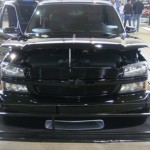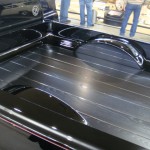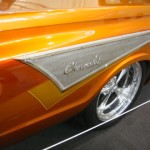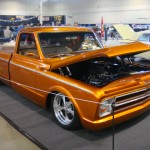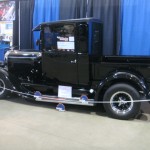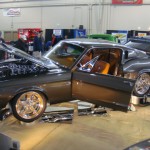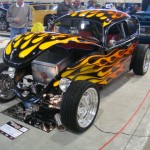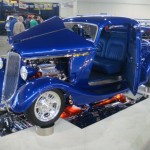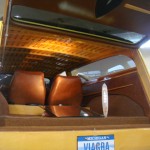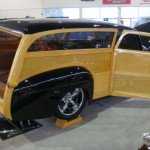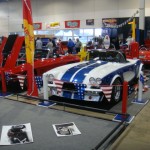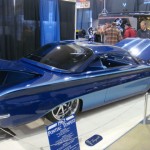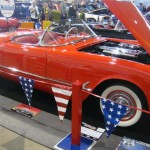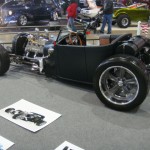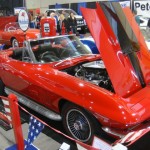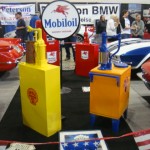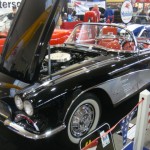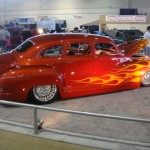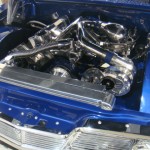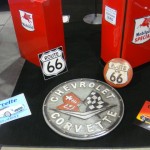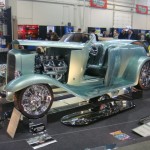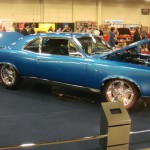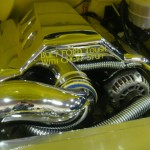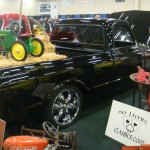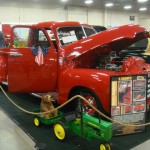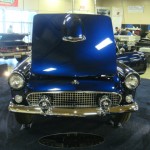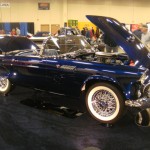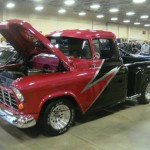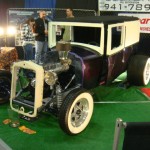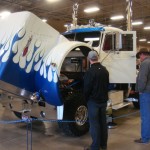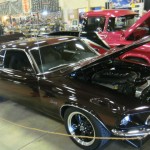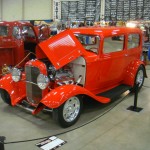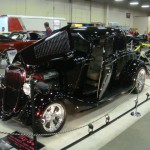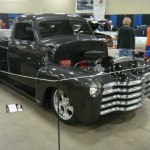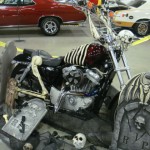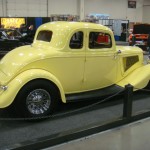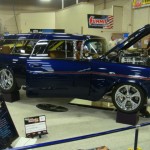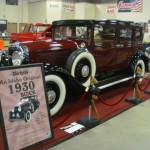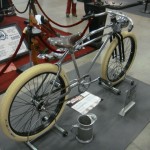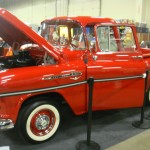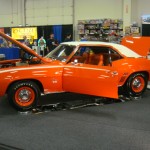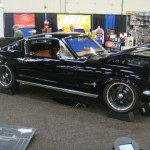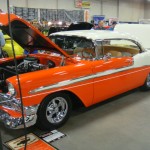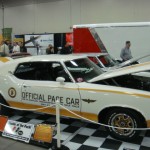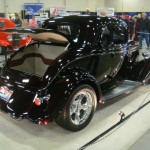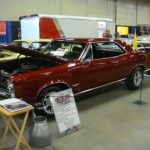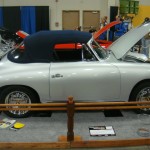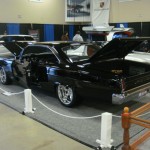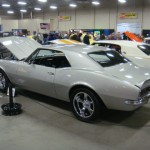A few people lately have had some questions regarding doing work on some part of their drive train so we thought we would share some more information on this. The chassis and drive train design on C5 and C6 Corvettes is actually pretty cool. It takes several hours of work but if you have access to a lift, by unhooking some wiring and removing a few bolts, the entire running gear of the car can be be separated from the body. As you can see in the picture above, this is a car we worked on recently and had to remove the drive train. The engine, front suspension, brakes, torque tube, transmission, and rear suspension can all come out as one assembly. It can then be broken down into individual pieces if only one part needs to be replaced. This also gives you great access to the individual parts if you are doing performance upgrades or engine work as everything is out in the open and no longer in the car.
Here is another picture that shows the drive train assembly a little closer. The red bracing bars on the rear differential were an aftermarket add on this vehicle had and stock Corvettes will not have that on them.
This car belongs to one of our customers and we just finished up custom painting his brake calipers to match the exterior of his car. They are now Corvette Sunset Orange with the Corvette letters being painted black to stand out a little better. We also sprayed them with clear coat so they are glossy just like the rest of the car. For better performance we swapped out the stock plain rotors with cross drilled and slotted ones. A set of stainless steel backer plates were also installed behind the brake pads to add a little chrome accent to the calipers as well.
Well, we have had two different customers come to our shop in the last week with the same problem. What happened was they both turned off the traction control feature on their C5 Corvettes, and then managed to lose control of their vehicles and have accidents.
One car, a Z06, went through a fence and the other was spun out into a concrete barrier. Neither driver was injured but extensive damage was caused to both vehicles.
The traction control features on Corvettes are designed to prevent wheel spin and will actually control braking at individual wheels to stop traction control problems, or losing control of the car. To give you an idea of how this works, if you took a Corvette out in the snow and floored the gas with the traction control on, the car would actually throttle back just enough to stop the wheels from slipping. It would also attempt to stop fish tailing or sliding out if you were to try and turn in such conditions also. It basically will not let the car go faster than the current conditions permit it to.
So when you are on dry pavement and turn the traction control off to do a sweet burnout and screw around a little bit, keep in mind that full power can go to the rear wheels and there is nothing stopping you from spinning out and losing control other than your own driving skill.
If you should however find yourself upside down in a ditch or something, we would be more than happy to put your car back together for you.
Here are a bunch of photos from the 2012 Boise Roadster Show. We were lucky enough to have our ’61 Corvette displayed with three other cars in the Valley Corvettes display this year.
And here is some video we got of the club’s display as well as a few other shots from around the show:
Here is the long line of Corvettes on their way to McCall as part of the 2011 Corvette Vettefest in Boise, Idaho.
